 The journey by train from Tokyo to JR Awa-Kamogawa station on the southern Boso Peninsula, is something of a revelation. The coastal cities and towns of Chiba prefecture may be scarred by congestions of sub-standard architecture, urban anomalies and an appalling lack of coordination, but after the settlement of Kisarazu, nature begins to assert its influence, to moderate even the most tasteless lapses in town and country planning. The high-tension wires, petro-incinerated buildings, cinderblock walls, chain-link fences and rusting lock-ups may still be there, but so are the rice-fields, forested slopes and wooden farmhouses of the Boso Peninsula. Here is a Japan that has returned to the earth. And the sea.
The journey by train from Tokyo to JR Awa-Kamogawa station on the southern Boso Peninsula, is something of a revelation. The coastal cities and towns of Chiba prefecture may be scarred by congestions of sub-standard architecture, urban anomalies and an appalling lack of coordination, but after the settlement of Kisarazu, nature begins to assert its influence, to moderate even the most tasteless lapses in town and country planning. The high-tension wires, petro-incinerated buildings, cinderblock walls, chain-link fences and rusting lock-ups may still be there, but so are the rice-fields, forested slopes and wooden farmhouses of the Boso Peninsula. Here is a Japan that has returned to the earth. And the sea.
Little wooden stations with blue tin roofs, their weatherboard walls painted white, are common sights along a railroad that begins to reduce speed as more short tunnels and curves appear. This brings trains and the motorized traffic that tracks the coastline, down to a slower pace, allowing for more detailed views of life beyond the windowpane. Red tiger lilies bloomed along the railway banks and the borders of temples and rice fields when I first took this route. At tiny fishing ports, men and women were using hammers to chip off encrusted salt from ropes and buoys, a task that looked as if it would take eternity.
Even the commercialism in the south of the peninsula, less ersatz and heavy-handed, seems to hail from a gentler time. Commercial hoardings on train platforms, resembling old fashioned, hand-painted kanban (advertising boards), promote the area’s coastal features with forgivable exaggeration. The beaches are often painted white in these idealized versions, though they are, with some exceptions such as Onjuku, of the gray variety. I saw fewer hibiscuses than the promotional blurb promised, and often rugged, zany-shaped cliffs had been shaved to a tree stump flatness and lathered with cement. Generally though, the sands along this southernmost part of the peninsula are simply too capacious and little visited on weekdays for the developers to have entirely tamed.
If the region’s sights and amenities, from its rather famous Kamogawa Sea World to its surf shops, beach restaurants, rental condominiums and fishing tours, tend to look towards the sea, its heartland lies in the terraced rice-fields, valley streams, camphor, bamboo and cedar forests, old farm houses, stone walls and little visited, time-worn temples and shrines of the interior.
 The house of Mikio Mizuta, a former Minister of Finance and founder of Josai University, provides an insight into the inner design of a minka (traditional farmhouse). The grand residence lies at the top of a slope bordered by farmland and a deep cryptomeria forest. The beautifully kept grounds include a nicely weathered Japanese garden to the side of the thatched-roof house. The interior, dark with high, smoke-stained rafters, speaks of spring and summer comfort, but cold winters huddled around the irori (hearth), or the two or three wholly inadequate hibachi heaters placed around the tatami matted rooms.
The house of Mikio Mizuta, a former Minister of Finance and founder of Josai University, provides an insight into the inner design of a minka (traditional farmhouse). The grand residence lies at the top of a slope bordered by farmland and a deep cryptomeria forest. The beautifully kept grounds include a nicely weathered Japanese garden to the side of the thatched-roof house. The interior, dark with high, smoke-stained rafters, speaks of spring and summer comfort, but cold winters huddled around the irori (hearth), or the two or three wholly inadequate hibachi heaters placed around the tatami matted rooms.
The drive to the farmhouse passes through an almost idyllic pastoral of stepped hills, evergreen forests, rushing streams and slopes used as nurseries for the growing of great stocks of cycads. Large numbers of loquat trees are cultivated in the region. Besides being eaten fresh, the fruit is used to make jam, juice, face cream and a pleasantly fragrant soap.
Further inland, nature and agriculture converge in the masterpiece of Oyama Senmaida, an amphitheater of rice terraces carefully tended by the farmers who own them and a preservation society that makes sure people approach them with the respect their beauty and rarity merits. The terraces change with the seasons, winter stubble, lines of frost and occasional snow, contrasting with the brilliant greens of the waterlogged basins in spring and summer, the yellow of autumn.
The appreciation of landscapes, of course, is relative. Comparing these paddies to the great rice terraces of Yunnan in southwest China, where the method began, or with the mountain slopes of Ifugao in the Philippines, the fields here are miniscule, but to come across such formations in the middle of the Chiba countryside is arresting. What to make then of Rosemary Park, a homage to Shakespearian England here in the middle of the Boso’s fine countryside? The bard’s world, replete with replicas of his parent’s house and an Elizabethan theater is among the surprisingly realistic models on view. Perhaps it was the aromatic herbs growing in the knot garden, or the whiff of purple rosemary, with its scent of a midsummer night’s dream in an English meadow, but I found myself, against my better judgment, rather enjoying the sight, slyly slipping into the souvenir shop before leaving to buy a jar of strawberry jam and a nosegay of lavender.
More apt in the context of the Boso’s southern clime and deep horticultural links perhaps, is the wonderful Nambo Paradise, an extensive botanical garden. Over three thousand rare plants are kept in the grounds and its massive greenhouse. Anyone with a horror of moths should stay well clear of the glass and net cho-kan, where butterflies and tropical plants are kept. Otherwise, this is a delightful world reminiscent of similar places in countries like Malaysia and Singapore.
Of Kamogawa in general, one might say that it is one place that, though not immune from commercial tourism, largely refutes George Orwell’s gloomy predictions for the “Pleasure Spots” of the future. The writer, whose forecasts were and still are taken seriously, listed five things to expect from tourism: one can never be alone, do anything for oneself, be within sight of wild vegetation or natural objects; light and temperature are always artificially regulated, and one is never out of the sound of artificial music. Although I was not able to escape the regulated temperature in my hotel room at the Kamogawa Hills Resort – something I was rather grateful for – my three days were spent almost entirely out in the elements and on bracing, sea-facing strips of land.
The main feature of this seafront at Awa-Kamogawa is its promenade, a long palm-lined walkway. One reason a morning or evening stroll here is so pleasant is the absence of a railway line or road, both of which are well set back in the town, out of sight and sound. In the summer this area is heaving with people, but off-season, decanted of picnicking families, sunbathers and cycle clubs, the esplanade is gloriously quiet.
On a sunny October weekend day when I made my first trip here, southern Boso’s reputation for a milder climate was endorsed by the sight of numbers of surfers out on the water, their glistening black suits unintentionally color-coordinating with the volcanic sand. The weather of course, is everything. On a dull day a beach like this can look like a coal slag. When the sun comes out, as it did again on my second November overnight stay, the autumn sea turned into a brilliant, hard blue. Kamogawa is where surfing first took off in this part of Japan, after American soldiers started coming down here with their boards back in 1964. Japan’s first surfing contest took place the next year, and the rest as they say, is history. There are no giant, orbiting waves, though, but the gentle swell of surf is good practice.
 Continue beyond the promenade and you come to a small fishing port, where boats are fitted out, caulked and hosed down for their next expeditions out to sea. A working port, with men repairing nets and drying squid on baskets, it provides an insight into the daily life of seafaring folk few visitors bother with. Following the road up to Uomizuka, a lookout point affording a superb view of the bay and promenade, I passed an ancient wooden temple with a large, rusty anchor standing at the entrance.
Continue beyond the promenade and you come to a small fishing port, where boats are fitted out, caulked and hosed down for their next expeditions out to sea. A working port, with men repairing nets and drying squid on baskets, it provides an insight into the daily life of seafaring folk few visitors bother with. Following the road up to Uomizuka, a lookout point affording a superb view of the bay and promenade, I passed an ancient wooden temple with a large, rusty anchor standing at the entrance.
The sea theme was replicated in the wood carving of the shrine’s main transom, where water dragons and waves tossed and rolled with an extraordinary fluidity. I would come across several other works like this the next day in the coastal and inland shrines of the region, before discovering the name of the artist. He turned out to be a local woodcarver named Ihachi. Born in Kamogawa in 1751, Ihachi established his own school but, despite lasting for a full five generations, few Japanese today know his name. Several local people I spoke to expressed concern at the vulnerability of these unguarded treasures.
Descending the hill, a mass of craggy islets with tori gates erected at their highest points came into view. One of the islets stands out for its shrine dedicated to Benten, a deity urbanites often associate with music and the arts. She is also linked to water and has been embraced by seafaring folk in Japan as a protectress akin to the figure Tin Hau, much beloved of Chinese fishermen.
Although you will have to walk through a graveyard of fiercely compressed tombstones to get to it, the short climb up to Gakekannon, a red-lacquered temple built perilously into the side of a sandstone cliff, is worth it. On fine days a trickle of visitors ascend the steps here on the peninsula’s west coast to enjoy the splendid sunsets, but it is the first sunrise of the New Year that attracts large crowds of people for a view that extends as far as Tateyama and Oshima Island.
A well-crafted statue of Kannon, Goddess of Mercy, deep within the recesses of the dimly lit interior, forms the center of worship here. The wooden flooring and terrace of the temple balance precariously above an overhang whose stability requires an even greater act of faith.
Story & photos by Stephen Mansfield
From J SELECT Magazine, August 2009

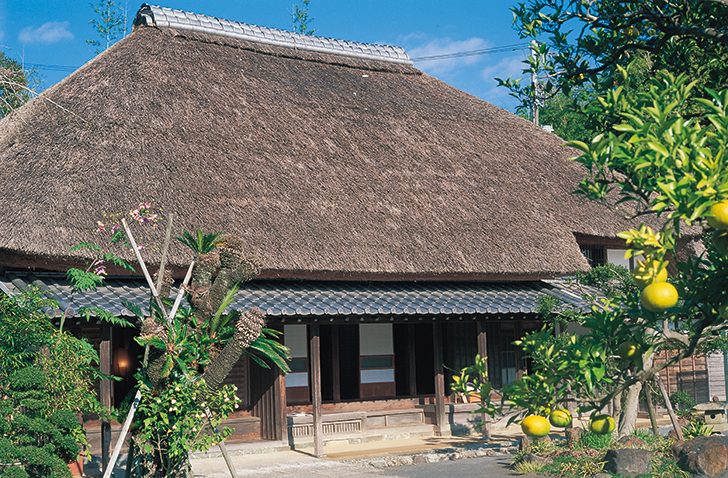

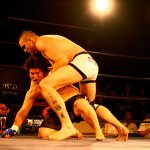

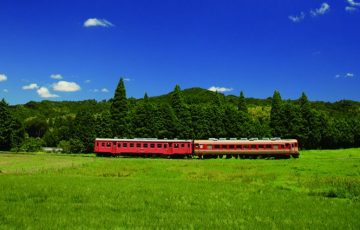


-360x230.jpeg)
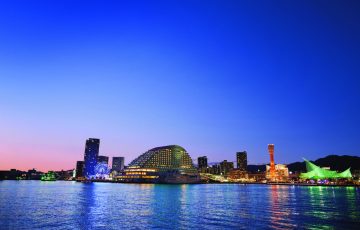
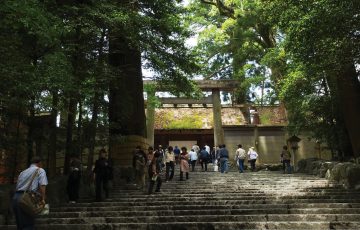
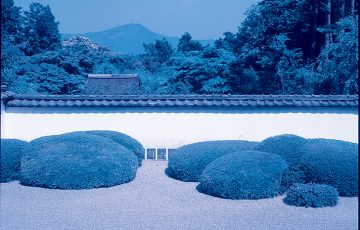
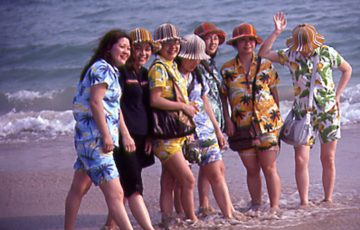


Recent Comments